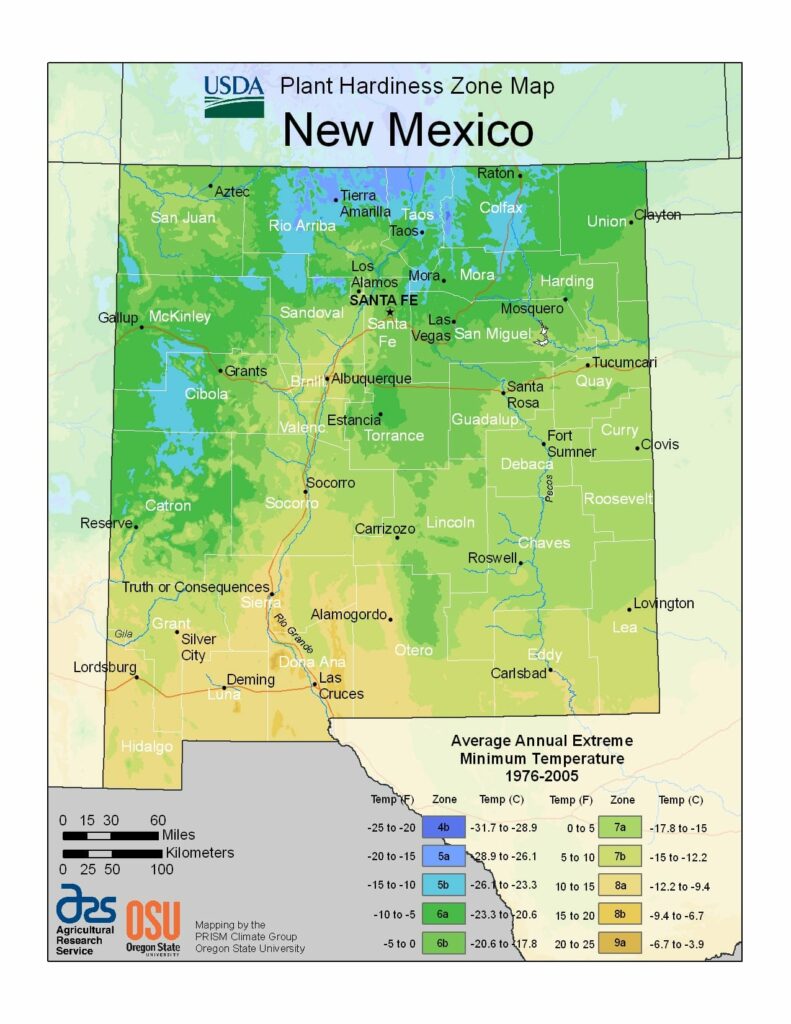
New Mexico has long been reputable for its pleasant, ranging from USDA Plant Hardiness Zones 4b through 9a.The state has variable weather per different areas so get to know which zone your city is located in so that you can address and avoid potential issues before they become problematic.
The USDA zones map is a useful system for determining what plants will survive and grow in certain areas ofNew Mexico.
Understanding how these hardiness zones work means you can choose the right planting time, and optimize growing for your climate.
Overall New Mexico is semiarid to arid, with areas of continental and alpine climates at higher elevations.
New Mexico’s statewide average precipitation is 12.9 inches (330 mm) a year, with average monthly amounts peaking in the summer, particularly in the more rugged north-central area around Albuquerque and in the south.
Generally, the eastern third of New Mexico receives the most rainfall, while the western third receives the least.